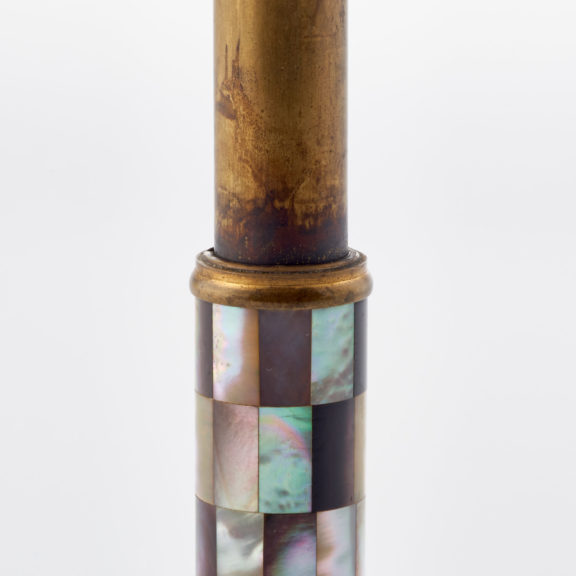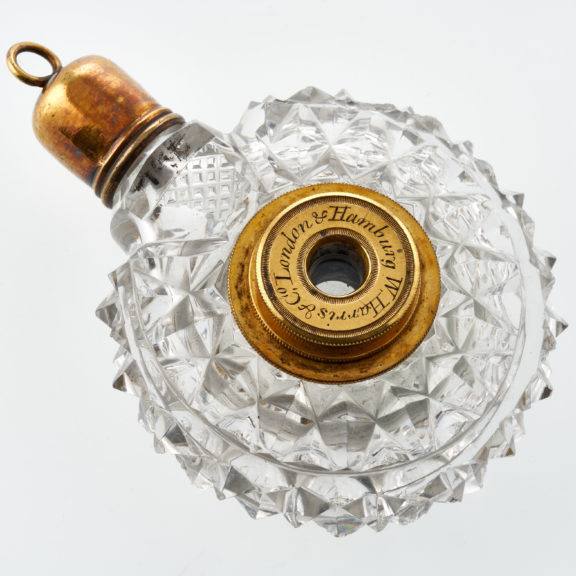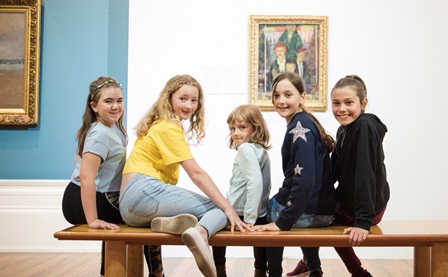Metalwork & Ivory
The Harris holds smaller miscellaneous collections such as a small clock and pocket watch collection that includes Preston makers.
Exploring Metalwork & Ivory
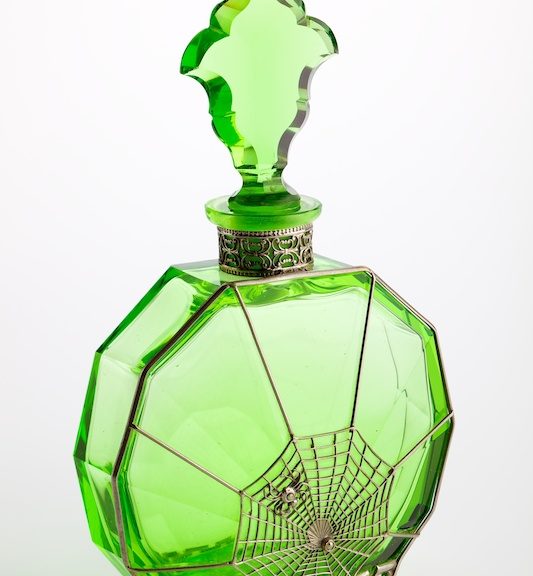
Spider’s Web Scent Bottle
Object number: F2551
This stunning green scent bottle is decorated with a spider’s web, on which a spider and its prey are picked out in marcasite. The geometric octagonal shape of the bottle and the colour combination of bright green and silver gives this piece an art deco feel. The bottle possibly was made in France and was made at a time when fewer people were buying individual bottles like this. This is because more commercial scents in their own packaging were becoming more and more fashionable.
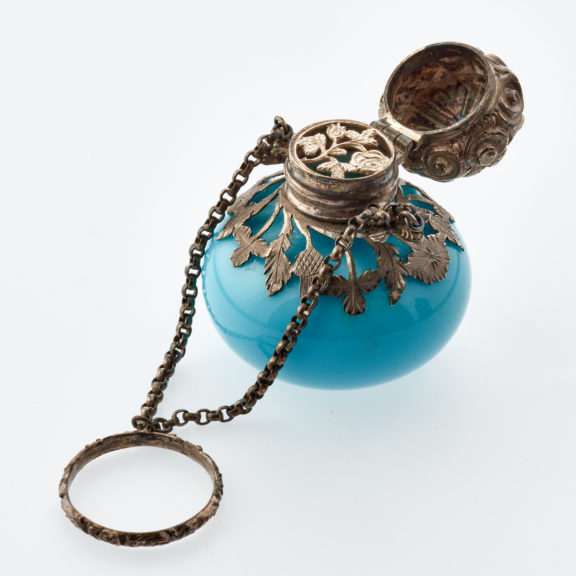
Blue Finger Ring Scent Bottle
Object number: F106
This scent bottle, made from blue coloured glass with decorative metalwork, was designed to be worn around a ladies’ finger. These bottles were often nicely decorated as they were worn at balls and for other public occasions. The bottle would be suspended from the middle finger and clutched in the palm of the hand, this would warm the perfume and mean it would emit an even stronger scent once the bottle was opened.
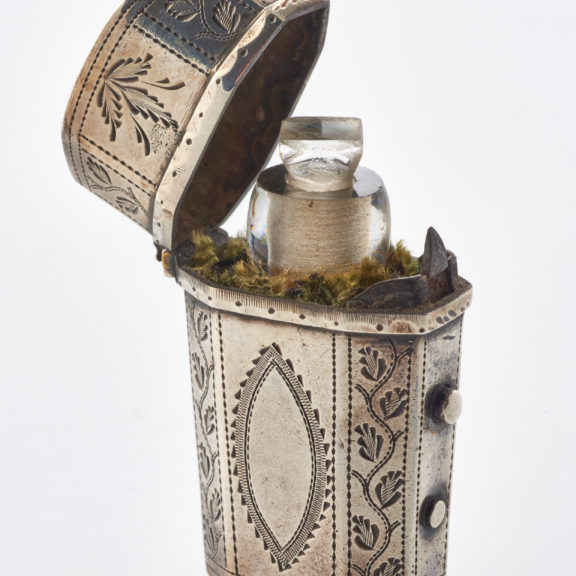
Silver Scent Bottle
This is a scent bottle made of silver that encases a small glass phial, which would have contained scent. Silver has always been a popular material for scent bottles and many of them were made in Birmingham, where the vast majority of silver lids were also made. London was also a large silver-smithing centre and on the continent where there were large centres in France, the Netherlands and Russia.
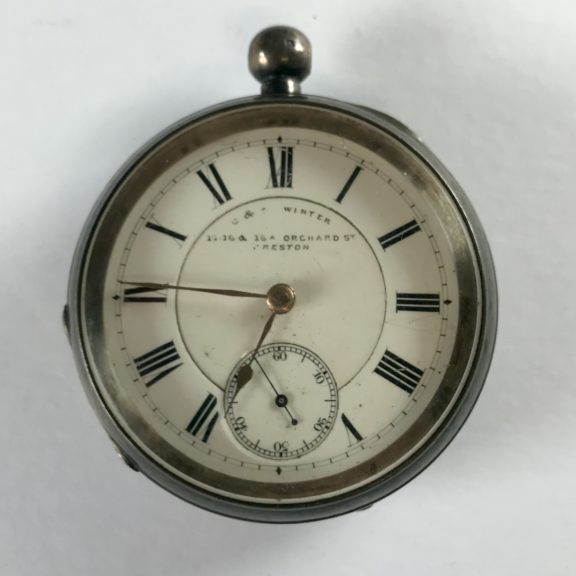
Metal pocket watch
Made: Winter, Orchard Street, Preston
Object number: 1996.1178
The Harris cares for around 40 pocket watches and watch movements. This example was made by a local watchmaker and jeweller J. Winters based on Orchard Street in Preston. Winters’ was a very smart establishment with a large and highly decorative clock on its fancy shop facade, which also in the mid-1800s advertised the firm as keeping ‘railway time’. Other famous jewellers and watchmakers in Preston include Yates’ which is still in business opposite the Harris. On this pocket watch there is a smaller clock face measuring seconds, in addition to hours and minutes.
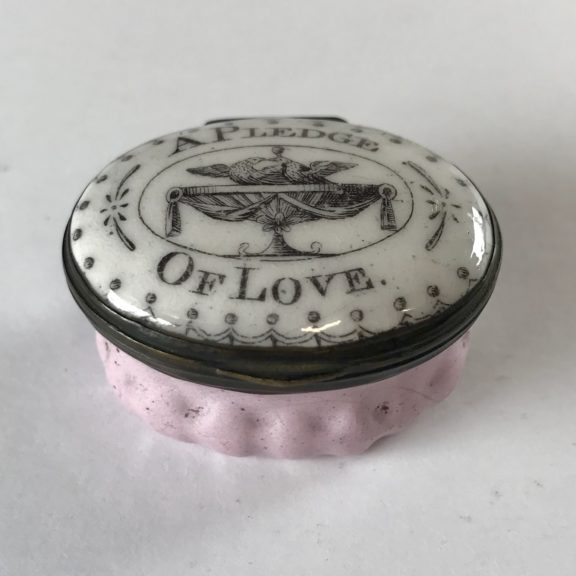
Oval enamel patch box inscribed on lid ‘A Pledge of Love’
Made: In Staffordshire
Date: 1800
Object number: 2005.143
This patch box was used to contain beauty spots – pieces of gummed taffeta which helped draw attention to the wearer’s complexion. They were popular but expensive love tokens. The Harris cares for several metal patch and snuff boxes with enamel decoration like this. The metalwork collection as a whole numbers 533 items ranging from commemorative trowels and inkstands and metalwork copies of ancient art works by Elkington’s which the Harris purchased in the early 1900s.
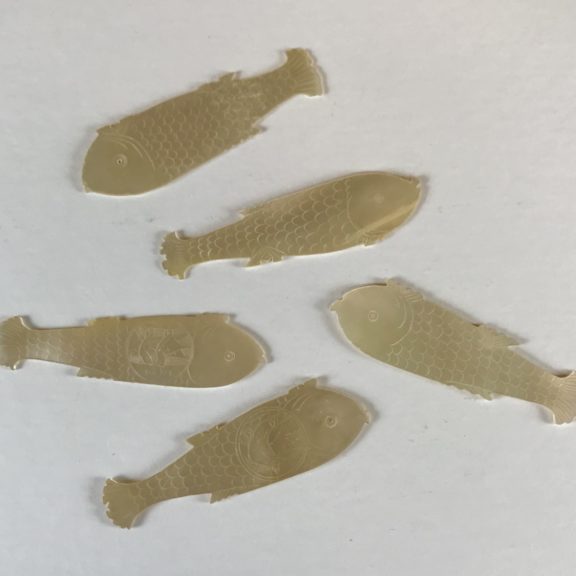
Mother-of-pearl gaming counters in shape of fish
Made: In China
Date: Unknown
Object number: 2006.135
Gaming counters like these little fish were used in card game in the 1700s. The Harris has a number of gaming counters like this in its collection – in a wide variety of shapes such as circles and squares. Most are elaborately decorated. Mother-of-pearl counters were imported by the East India Company and were sold by the dozen, for around four shillings. Most were made and decorated in China. Gaming counters went out of fashion in the 1800s – as many Victorians disapproved of gambling games. Mrs French collected small decorative items like this in the early 1900s. Her favourite activity at weekends was driving around second hand shops looking for scent bottes, mineral samples, card cases and gaming counters like these.
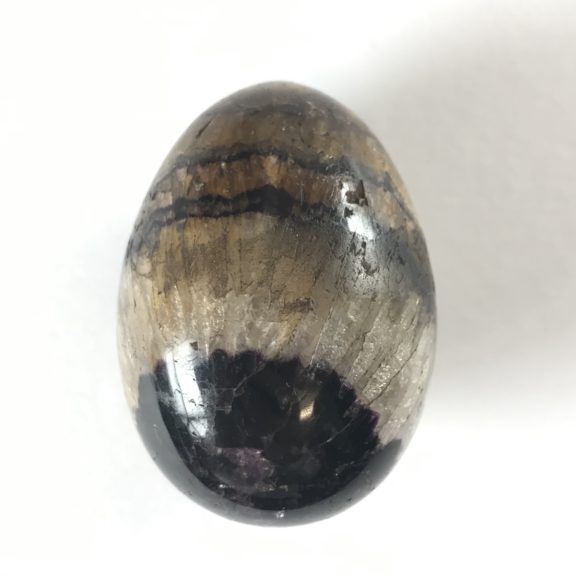
Egg-shaped mineral sample of blue john stone, in purple, brown and cream
Made: Unknown
Date: Unknown
Object number: 1996.17
This polished egg is a mineral sample in a stone known as blue john. The Harris cares for 781 examples of mineral samples –largely eggs like this, but also paperweights and ashtrays. This sizeable collection was put together by Mrs Idonea French (1880-1964) a Dublin-born collector, based in Kent. She spent a lifetime collecting small decorative objects like mineral samples, gaming counters and scent bottles. The minerals in the collection vary in colour and character and include fiberous gypsum, fluorspar, barytes, calcite, limestone and quartz to name just a few.
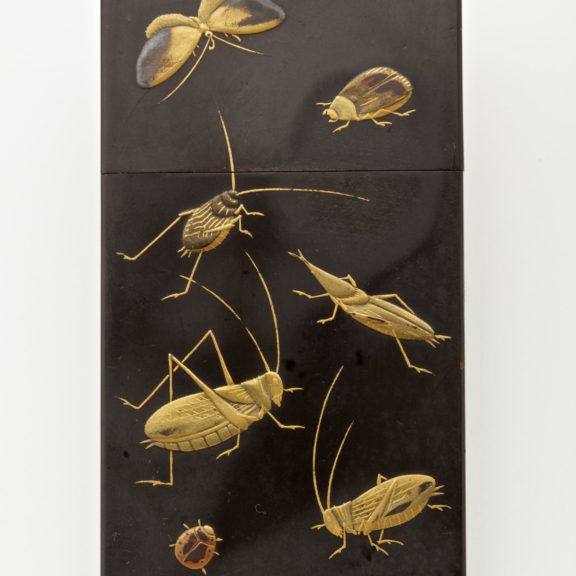
Black lacquer card case decorated with insects on one side, and a bird on the other
Made: In Japan
Date: c. 1890
Object number: 1998.19.755
This black lacquer card case was made in Japan – it is decorated with various insects including a grasshopper. It is one of 936 card cases in the Harris collection. They all once belonged to Mrs Idonea French (1880-1964) – a private collector based in Kent. She spent a lifetime collecting small decorative items like scent bottles, gaming counters and mineral samples. Calling or visiting cards were used in the 1700 and 1800s to announce a guest’s arrival but they fell out of favour in the early 1900s. Mrs French purchased card cases from second hand shops and put together an impressive collection of lacquer, silver, mother-of-pearl, wood and tortoiseshell examples.
